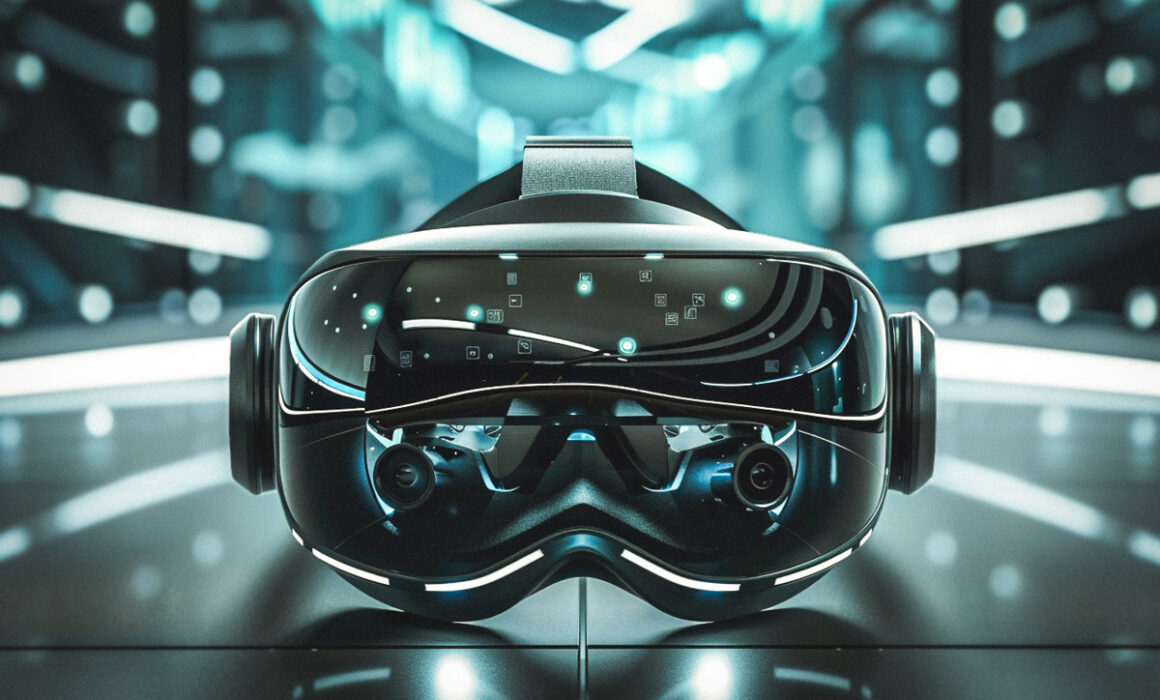Why FPGAs are so beneficial for VR applications?
Virtual Reality (VR) is an immersive technology that aims to create a simulated environment, often with a high degree of realism. As the demand for more sophisticated VR experiences grows, the need for efficient and high-performance computing solutions becomes crucial. One of the most well-known applications of VR is in entertainment, but its use extends to a wide range of fields and everyday activities. Some of the industries that benefit from this technology are healthcare, education, aviation, automotive, education or logistics, and the list continue as the technology advances.
The global virtual reality market is expected to be valued at USD 15.9 billion in 2024 and is forecasted to grow to USD 38 billion by 2029. This is something most of the companies are taking in consideration to optimize its production and work more precisely. Some of VR solutions are helping optimizing the production chain in sectors like automotive, improving rehabilitation therapy in the healthcare sector or reducing costs and increase efficiency in factory floors.
The Demands of VR Applications

To understand why FPGAs are ideal for VR, it’s essential to first consider the specific demands of VR applications:
- Low Latency: VR systems must respond in real-time to user inputs, requiring low latency to prevent motion sickness and ensure a seamless experience.
- High Bandwidth: The high-resolution graphics and detailed environments in VR require significant data bandwidth for both rendering and display.
- Parallel Processing: VR applications often involve complex tasks like image signal processing (ISP), physics simulations and sensor fusion, which benefit from parallel processing capabilities.
- Power Efficiency: Particularly in portable VR systems, power efficiency and heat management is crucial to maintain a lightweight and comfortable user experience
The Advantages of FPGAs in VR
FPGAs are highly configurable, allowing developers to design custom hardware and software that is tailored to the specific needs of a VR system. This flexibility enables the optimization of data paths and computational elements for tasks such as:
- Sensor Data Processing: VR systems often integrate multiple sensors (gyroscopes, accelerometers, cameras) to track user movements. FPGAs can be programmed to efficiently process and fuse this data, reducing latency.
- Real-Time Parallel Processing: Tasks such as object detection, image segmentation, and distortion correction can be performed in parallel, ensuring smooth and responsive VR experiences. Unlike traditional CPUs, which execute instructions sequentially, FPGAs can handle multiple tasks simultaneously. This parallelism is ideal for VR applications where real-time rendering, sensor data integration, and interactive experiences are necessary.
- Image Signal Processing (ISP): In VR, high-quality visuals are critical. FPGAs enhance Image Signal Processing (ISP) by providing customizable pipelines that can be tailored to specific image processing needs, such as noise reduction, colour correction, and edge enhancement. This capability ensures that the VR environment is rendered with high fidelity, providing users with a more realistic and immersive experience. The adaptability of FPGAs allows for real-time adjustments and optimizations to maintain the best possible image quality.
- Specialized Algorithms: Custom implementations of algorithms for tasks like audio processing, compression, or artificial intelligence (AI) inference can be realized on FPGAs, providing a significant performance boost over general-purpose processors.
- Multi-Sensor Fusion: The ability to process data from multiple sensors simultaneously allows for accurate and real-time tracking of user movements.
- Eye Tracking: Eye tracking is an emerging technology in VR that enhances user interaction and experience. FPGAs are well-suited for processing the high-speed data required for accurate eye tracking. They can quickly analyze eye movements and adjust the rendered scene accordingly, which not only improves user immersion but also optimizes system performance by rendering only the areas of the display that the user is directly looking at, a technique known as foveated rendering.
- Object Detection with Machine Learning: The FPGAs ability to handle large datasets and perform complex computations at high speeds makes them ideal for real-time object detection tasks. This feature is essential in VR applications for identifying and interacting with virtual objects, enhancing interactivity, and providing a more engaging experience. The reconfigurability of FPGAs allows developers to update and optimize machine learning models as needed.
- Depth Sensing: Depth sensing is crucial in VR for creating realistic 3D environments and interactions. FPGAs enable efficient processing of depth data from sensors like LiDAR or stereo cameras. They can rapidly compute depth maps and integrate them into the VR environment, allowing for accurate spatial representation and interaction. This capability is essential for applications that require precise hand tracking, gesture recognition, or navigation within a virtual space.
- CPU Offload: FPGAs can offload specific tasks from the CPU, freeing it up to handle other critical functions. This offloading improves the overall system efficiency and performance, which is particularly important in VR where maintaining high frame rates and low latency is essential. By handling tasks such as signal processing, data compression, or encryption, FPGAs reduce the computational burden on the CPU, enabling smoother and more responsive VR experiences.
In summary, FPGAs provide a versatile and powerful platform for enhancing various aspects of VR technology. Their capabilities in parallel processing, customizability, and efficiency make them an invaluable component in developing next-generation VR systems that offer immersive, high-quality, and responsive user experiences.




